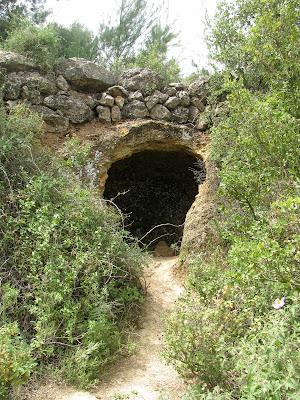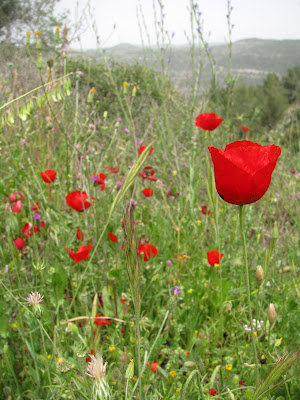This is Israel.
Hod Hasharon Ecological Park is located south of the city of Hod Hasharon, a
city in the Central District of Israel. The park is home to a delicate
ecosystem based on treated wastewater. You will find a large ecological lake
and a flowing tributary of the Hadar Stream, three birdwatching hides,
pedestrian paths and cycling trails. The park was inaugurated in 2018 and
while it is not complete, it is already a beautiful place to visit. When
development is complete, it will cover 1,400 dunams (140 hectares).
The lake, which is the main focus of the park, was planned as an ecological
body of water. Underwater sandbanks resembling the natural stream beds of
the area have been built on the 2 metre deep lake bed. These create a
variety of habitats that sustain an entire ecosystem, from bacteria to algae
to fish and amphibians. Birds that nest in burrows, such as the
European Bee-eater
and the
European roller,
have dug their nests in the banks and some 150,000 plants of about 30
species typical of the natural vegetation of the area have been have been
planted there.
The source of the water for the lake and the park is the Hod Hasharon-Kfar
Saba wastewater purification plant. The water receives its final
purification in green basins south of the park and, from there, with its
quality greatly improved, it is channelled to the lake. The water in the
lake is replaced every five days. Pumps draw out the water and send it on
to the Hadar Stream and the
Yarkon River.
The hill on the west side of the lake is also made of recycled
waste. Har Hazevel, or "Garbage Mountain", was a solid
waste landfill until the early 1990s. It is still undergoing rehabilitation and is currently covered in mud and sand. An easy climb to the top
boasts beautiful views of the park and the surrounding area. The route is
already popular with cyclists and hikers.
Behind "Garbage Mountain" is an abandoned stone building, below, which will
eventually be restored as the park's visitors centre. The Arab village of
Abu Kishk once stood here and this building was a school built by the
British in 1925 for the children of Bedouins living in this area. By the
mid-1940s it had 108 students, including 9 girls. Today cactuses and almond
trees grow nearby.
From the birdwatching hides I spotted little egret, cormorant, black-crowned night heron and squacco heron on the island in the centre of the lake and along the banks. During the season many migrating birds arrive in the area. The park provides them with a proper place to rest and "refuel" before continuing their journey.
The Hadar Stream was once a short, dry watercourse that channelled sewage
between cultivated fields. Only rarely, after heavy rainfall, did water
briefly flow through it. Soon after water began flowing through the Hadar
Stream in 2014, species of fish appeared there that had adapted to the
treated wastewater. Among these are the
Eurasian carp and
redbelly tilapia. They have been joined, whether as permanent or occasional
inhabitants, by various amphibians, reptiles and mammals. You can see
Caspian turtles
and the
Nile Softshell turtle
in the lake, as well as
Coypu (nutria), the
large, semiaquatic rodent which we last saw at the
Hula Lake.
Hod Hasharon Ecological Park is always open and you can visit at any time. At
night there is artificial light. It is forbidden to start a fire or make
barbecue at the park. Swimming and fishing are not allowed and dogs should be
on a lead. Entrance is free.
I highly recommend a visit.












































































